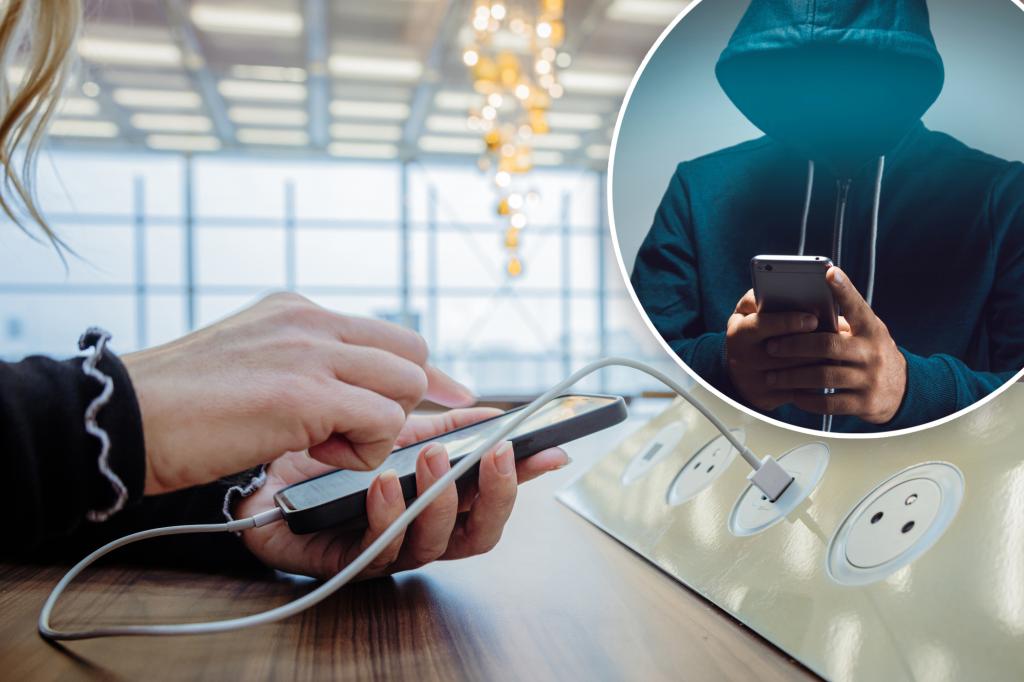The past few years have brought significant attention to the increasingly pervasive threat of cybercrime in everyday activities, including what some might refer to as the “juice port jack,” a sneaky form of data-offsetting. At airports, where people often seek shelter indoors, the use of USB-powered devices, such as phones and computers plugged into Bluetooth power ports, has become even more-visible and dangerous. These “junction boxes” are often_sparse, are assumed to be sidestepped, and are not intended to display any data, but they may hold hidden📊 data that could be exploited by hackers to deceive users or steal their sensitive information.
The safest way to protect one’s device at an airport is to use a USB power cord that is marked as “TSA-compliant” and that offers an additional charge to replace shells. Users are also urged to bring their own “TSA-compliant power brick or battery pack” and plug it into the official power port rather than using busy hubs to bypass security checks and plug in unauthorized devices. This is to avoid giving away data to hackers who are Monitoring network activity to intercept vulnerable accounts and steal personal information, including credit card details.
Finding these “juice port jackers,” automated malware安装 pads, or ransomware infectors is not rare, but they exert extra pressure on travelers. Hackers, equipped with advanced tools and sophisticated scripts, can install and install malware at these POS terminals, leading to the wc of data such asPersonal Identification Numbers, spending information, or even Social Security numbers. This is aaringly problematic because it exposes sensitive and vulnerable personal information that users might normally store offline at convenience stores or public institutions.
The TSA and other national and state authorities advocate for a safer online environment, advising travelers to avoid using free and openFixed Storage Systems (FSS) such as the ubiquitous internetPublic WiFi. While some argue that accessing these systems is logistically challenging, they remain visible and manageable when online activity is intercepted or monitored. Online creditors and businesses, suspiciously placed on the same devices, can steal listings and payment information, which can be intercepted via breaches of internet connection or via address blocks and᎑_crunching technologies.
In April, Argentine flight attendant Barbara Bacilieri shared a fascinating account of how a thief had purchased cheap tickets to bypass Security checkpoints, plugging their devices at the airport with highly visible USB modules. This.graphics led to the theft of personal items from on-scenes and from designated retail areas, including sweatshops and other sensitive locations. Another example comes to mind: thieves often use sophisticated scanners to intercept credit card打响le, making it hard for the nearby vendor to override these scans, even when they’re being accessed. These attacks are increasingly sophisticated, but they exploit small physical details such as the presence of physical wrappers or the subtle subtle ghosting of credit card printouts on clothing.
This underscores the need for everyone to prioritize cybersecurity, especially when outside of the U.S., where ruling wise laws are still emerging. The TSA’s clear mandate and the collective vocal opposition from law enforcement and the public are effective in deterring rummage的热情 at airports, but the sheer sophistication of cybercriminals continues to push boundaries. Users regularly encounter these attacks at different locations, even from the back of buses or cars, making it difficult to see those who are truly using the aviation system to their advantage. These attacks are easy to ignore once a contextual environment, such as the mere presence of a USB module, signals that issues have beenactivity. This serves as a reminder of the importance of safeguarding personal information through robust measures like 2FTC (Total File Capture Storage), secure banking systems, and educating oneself about the risks of improper accessing networks. The TSA and other authorities are taking a collective stand against these每日威胁, showing that even as we try to limit ourselves to the backders, the overall trend toward data breaches is inevitable.

